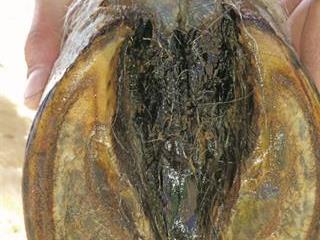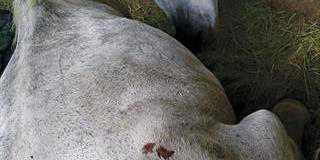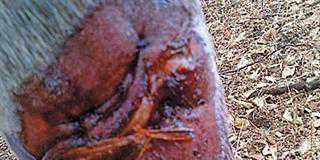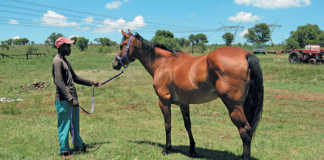
As the saying has it: “No foot, no horse”. Those who ride horses competitively know that all the schooling, grooming and feeding will go to waste if you don’t have a good farrier. And when we’re talking about sheared hooves (or heels), prevention is most definitely better than cure, as it’s very expensive to treat a lame horse.
The back part of a horse’s hoof is called the ‘heel’ and is divided into two, slightly rounded parts called ‘bulbs’. Sheared heels is caused when the structures between the bulbs breaks down and more pressure is applied to one than the other.
The increased pressure on one side of the heel weakens the wall of the hoof. This disturbs the bond between the laminae at the back of the foot. (Laminae are the leaf-like structures that bind the hoof to the underlying flesh and bone.)
Signs
The main sign of a sheared heel on a competition horse is sudden lameness after exercise. Often this lameness occurs the day after a show, or just before a show, when the level of exercise is increased and the horse has its ‘feet done’ in order to make sure it looks good in the show ring. Wet conditions that allow more movement of the hoof wall also contribute to the problem. Once the heel has ‘sheared’, a crack can appear at the back, between the bulbs, extending upwards into the skin and downwards into the frog. If you press on the back of the heel, the horse flinches away in pain.
Cracks
Dirt and manure get into these cracks and cause thrush or footrot. The back of the pastern feels hot and the skin may become red. The crack along the middle of the frog is also painful and hoof testing results in pain along the back parts of the hoof. If left untreated, the condition can become so severe that the horse refuses to walk, or even to leave its stable. Sheared heels have also been associated with navicular syndrome.
Farriers and vets may disagree about the cause, with some regarding it only as a conformational fault. If a horse ‘toes out’ or ‘toes in’, this will result in the hoof curling over or under the foot, more upright hoof walls and uneven pressure on the heels. Such horses aren’t usually used for extreme sports such as jumping, racing or polo, so there’s not a lot of pressure on the hoof.
If, however, an equine athlete or show horse is shod and the balance of the hoof is affected due to shoeing, often to correct a slightly deviated (toe-in or toe-out) foot, the shear forces are extreme, especially in mature horses where the bone and cartilage have already hardened. Although most vets don’t regard this as an emergency as the lameness is initially fairly slight, it’s important to act early. A specialist veterinary farrier should be consulted and the hoof rebalanced.
The underlying hoof infection, or thrush, should be treated by using hoof spray or any other method suggested by the farrier. It may also be necessary to call in a vet to give an antibiotic injection if the pasterns feel hot.
Contact Dr Mac at [email protected]. Please state ‘Horse talk’ in the subject line of your email.













